Coffee grounds as a fertilizer
All this is possible thanks to the beneficial substances contained in the coffee grounds. You can talk a lot about the beneficial properties of sleeping coffee and its use as a fertilizer for indoor flowers and garden plants, but this issue should be understood in more detail.
Useful properties of coffee grounds
Ground coffee contains a lot of valuable substances. It:
- potassium;
- calcium;
- magnesium;
- nitrogen;
- phosphorus;
- a number of other useful minerals.
There is no doubt that during the brewing process, some of these substances are washed out from the coffee grounds. The content of useful mineral components in drunk coffee is about 2-3% (it is different for different substances). But even this amount is enough to use coffee grounds as a mineral fertilizer for home and garden flowers, vegetables, ornamental plants. The substances in coffee waste are essential for their growth and development.
For example, nitrogen plays a key role in the process of photosynthesis, without which plant growth and oxygen production are impossible. Phosphorus and potassium are also involved in this important process, contributing to the development of the plant, the formation of flowers and fruits.
Using dormant coffee as fertilizer is an almost free way to provide your plants with healthy mineral nutrition.
In this case, the probability of harming them from an overdose of one or another component is zero. The concentration of minerals in the thick is optimal for many indoor flowers, garden and garden plants.
Indoor flowers are especially susceptible to fertilization from coffee grounds:
A good result is obtained by using dormant coffee for feeding vegetables, including:
This fertilizer is suitable for garden roses, lilies, ornamental shrubs, spicy greenery.
Drinking coffee is an excellent means of feeding fruit and berry bushes and trees. After its application, the yield of these crops increases.
It is believed that coffee residues are acidic and therefore not suitable for many plant species. This is not entirely true. The grains really have a high acidity. However, excess acid is washed out during the brewing process. Coffee grounds have a neutral acidity level and, as a fertilizer, are suitable for feeding any plants.
Using coffee grounds as fertilizer
To fertilize plants, coffee grounds are used in two ways:
- Liquid top dressing. This method is very simple. It consists in collecting coffee residues (grounds and part of the liquid) in one container. Then this composition is poured over the ground in flower pots or under garden plants. This method has one significant drawback: a wet substance is susceptible to mold or fungus infection. Therefore, it is recommended to use dry dressing to fertilize potted plants.
Helpful Hint: To fertilize the beds or garden shrubs, dilute the grounds to a state that is convenient for watering. Pour the plants on top from the watering can, then pour plain water. This will allow the minerals to be slowly released into the soil to nourish your plants.
- Dry dressing. Dry the coffee residue thoroughly before use. To do this, after draining a small amount of thick, we distribute it in an even layer on a sheet of thick cardboard or waterproof paper. You can use plastic trays or oven trays.Place the prepared grounds in a warm place and keep there until completely dry. When the substance is dry, do not forget to break up the caked lumps. Fertilizer can be used immediately or stored in dry glass, plastic, or cans with tight-fitting lids. Thick paper bags are also suitable for this purpose.
Applying coffee grounds in the garden
Sleep coffee in a dry form is poured under the plant, then the soil is slightly loosened. When watering, useful substances will be released and flow into the ground, gradually enriching it.
Using this fertilizer in the garden, it is dug into the ground under the plants. With the help of a shovel, the earth is dug to a depth of about 5 cm. Dry grounds are added to the loose soil. For one tree - 1-2 glasses, depending on the size. Then sprinkle the thick with earth and lightly tamp.
Helpful hint: do not add a lot of ground (so that it covers all the ground under the plant). In this case, a crust may form during watering, which will interfere with the access of oxygen to the roots. Do not add thick to seedling soil... It will make the soil heavier and slow down germination.
Slept coffee for flowers
Especially popular is coffee sediment as fertilizer for indoor plants and garden flowers. To fertilize indoor flowers, it is recommended to prepare the following composition:
- 50% coffee grounds;
- 20% chopped dry straw;
- 30% foliage.
Mix all ingredients and let them remix. You can use a large tank or an old saucepan for this. The mixture should be covered with fertile soil on top, make several holes with a stick and let it ripen for about a month. The resulting composition can be used as nutritional supplements by adding them to flower pots.
When planting flower beds and laying flower beds, there is also a use for coffee leftovers. When forming a flower garden, add them to the soil. On a bucket of earthen mixture, you should take one glass of dry grounds, mix everything thoroughly, after which you can plant flowers. After planting the plants, the soil must be watered abundantly.
Coffee cake as compost
Mineral substances, primarily nitrogen, contained in coffee residues tend to be released gradually under the influence of microorganisms. This makes coffee pomace a valuable component in garden compost. To do this, it is collected and placed in a compost pit. Thickness promotes the early decay of the contents of the pit, improves its mineral composition.
Coffee cake can also be added directly to planting pits for garden ornamental and fruiting plants. To do this, dry cake is mixed with prepared soil. A plant is planted in the prepared soil and watered abundantly.
Helpful Hint: Try using a compost containing leftover coffee for growing mushrooms. According to the reviews of those who used this method, the yield increases 2-3 times.
How else to use the thick
Coffee grounds can not only enrich plants with useful minerals, but also protect them from a variety of pests.Insects such as ants, slugs, snails, aphids and others do not like her. The use of grounds allows you to safely and inexpensively protect your crops. Such a remedy can also be used to prevent the appearance of pests.
Coffee grounds can be simply irreplaceable in your garden. It is an excellent tool for changing soil structure. The addition of grounds will make the heavy and clayey garden soil looser and lighter. To do this, cake is added to the soil and regularly loosened.
Sleepy coffee and leftovers from it can attract beneficial insects. Including earthworms. This property is especially important for composting. Worms, recycling the contents of the compost pit, loosening it, contribute to the rapid maturation of the compost.
Cats don't like coffee aroma. With the help of the thick, you can wean your pet from shitting under your favorite bush.You just need to sprinkle the dry product in a thin layer and do not water for a while.
Where to get enough grounds
First of all, do not throw away after drinking the drink itself. So, in a few days, you can collect a sufficient amount of grounds. Good for use as fertilizer or compost for coffee cake.
In some cafes and restaurants abroad, as well as in our country, a special table has recently appeared with packages on which it is written "Coffee grounds for your plants" or "Coffee scrub for you". They contain a useful and pleasant present for the visitors of the establishment. Feel free to take a few bags. They will only benefit your plants.
Therefore, you should not throw away such a useful product as coffee cake. By following the tips given here, you will definitely find a use for it in the garden or in the cultivation of indoor flowers.
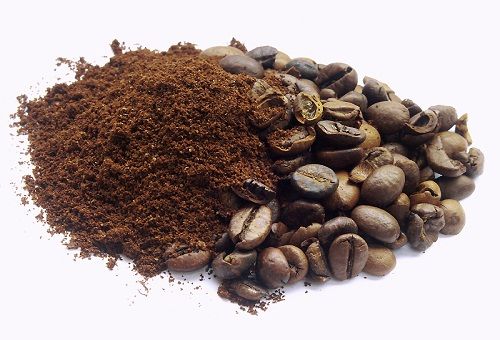
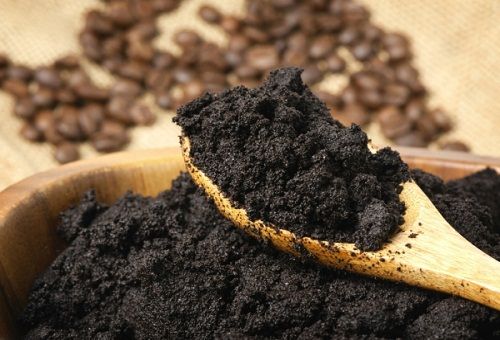
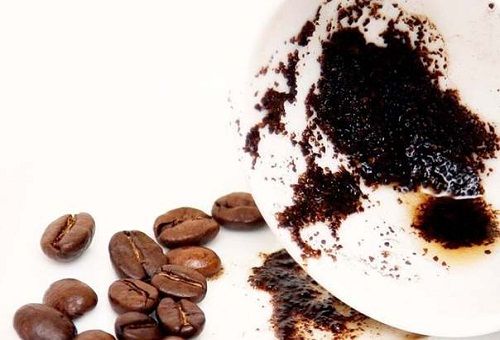
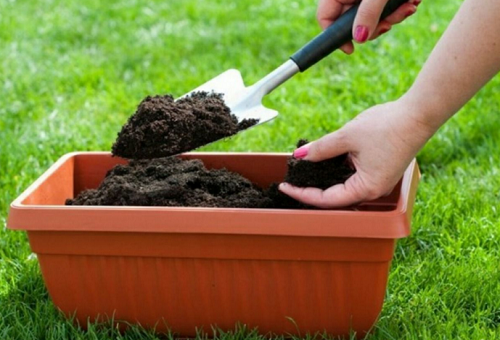
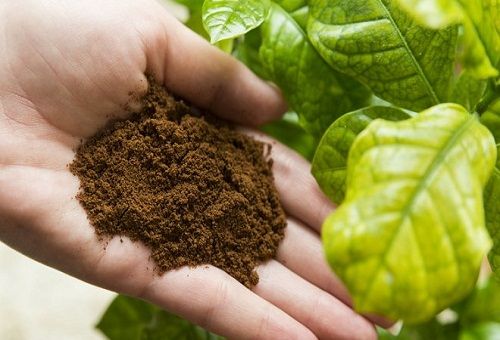
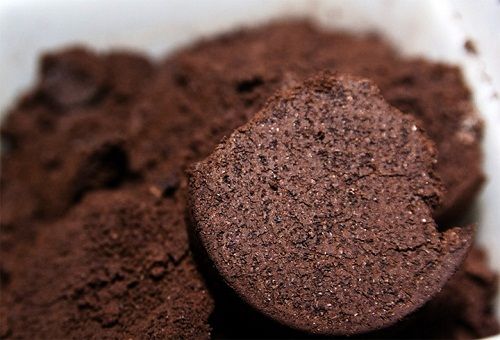
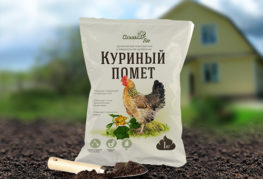
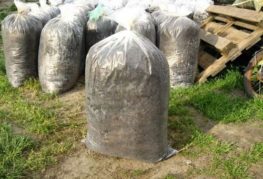

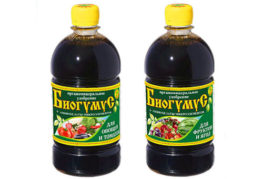
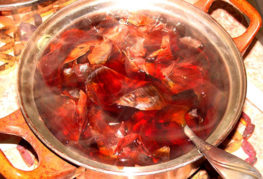
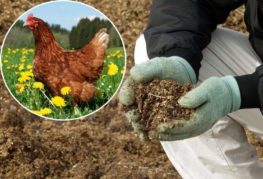
and will be published shortly.